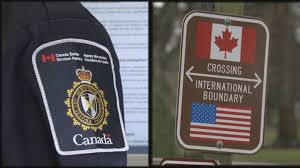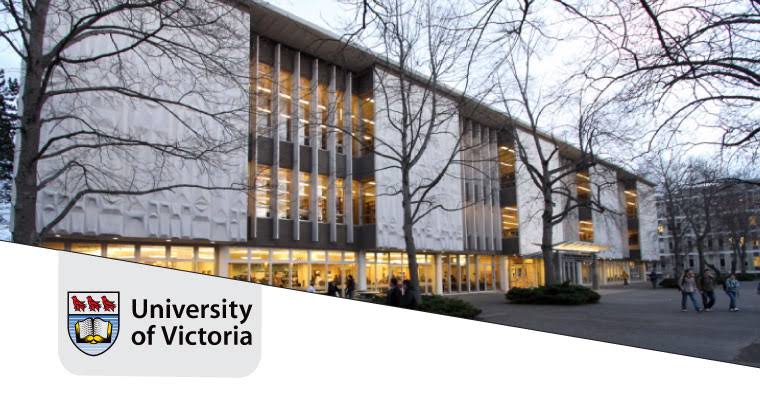Canada’s approach to border security has focused on openness, humanitarian values, and working with allies like the United States. But with new global threats, technology, and changes in migration and trade, Canada has updated how it manages its borders. Starting in July 2025, Canada introduced a new border security plan that combines traditional enforcement with digital tools, international cooperation, and a strong focus on human rights and safety. This change aims to protect Canada while keeping its values of inclusion and access.
The Drivers Behind Canada’s New Border Security Policy
Several factors have contributed to the overhaul of Canada’s border security strategy. Rising global migration, climate change-induced displacement, cyber threats, cross-border crime, and heightened geopolitical tensions have made it necessary to update border frameworks. In particular, surges in irregular migration at the U.S.-Canada border, especially in Quebec and Manitoba, have prompted Ottawa to invest more heavily in monitoring and screening mechanisms.
Moreover, international developments—such as Russia’s cyber aggression, China’s growing influence in North American logistics, and the lingering instability in parts of Latin America—have added new layers of complexity. Canada’s leaders recognized that an outdated border security system would not only be inefficient but also vulnerable. The new strategy was crafted with both security and economic considerations in mind.
Enhanced Technology at Ports of Entry
One of the most notable aspects of Canada’s new border security approach is its embrace of technology. As of 2025, Canada Border Services Agency (CBSA) has fully implemented advanced facial recognition systems, biometric screening, and AI-powered analytics at major land border crossings and airports. These tools are now critical in verifying identities, detecting anomalies, and flagging high-risk individuals without creating long delays for the average traveler.
The CBSA has also launched pilot programs using drones and satellite surveillance to monitor remote border areas, especially in sparsely populated regions in the Yukon and the Prairies. This helps address smuggling operations and illegal crossings in areas previously difficult to police. Additionally, smart sensors installed at key transportation infrastructure such as bridges, tunnels, and rail terminals allow for better tracking of cargo and vehicle movement.
A Shift Toward Pre-Border Screening
Canada’s new model emphasizes pre-emptive border security measures, particularly in travel and immigration systems. Through the expansion of its Advance Passenger Information and Passenger Name Record programs, CBSA now screens individuals before they arrive in Canada. Airlines, cruise lines, and bus companies are required to transmit data in real time, which allows border officials to identify potential threats before they reach Canadian soil.
The government has also enhanced coordination with partner countries, including through the Five Eyes intelligence alliance, to streamline information-sharing. This helps flag individuals involved in transnational crime or terrorism, reducing the risk of delayed or misinformed responses at the border. Moreover, the integration of real-time risk profiles allows border guards to act swiftly while respecting privacy and legal protocols.
Cybersecurity and Digital Infrastructure Protection
In an age where borders are increasingly digital, Canada’s border security also includes robust cybersecurity measures. In July 2025, the Canadian government unveiled the “Digital Border Shield” initiative—an integrated program aimed at protecting the digital systems used for customs, immigration, and cargo management.
This initiative involves collaboration between CBSA, Public Safety Canada, and the Canadian Centre for Cyber Security. It aims to prevent cyberattacks on critical databases, block foreign interference in immigration decisions, and secure online portals used for e-visas and customs declarations. This is especially vital as cyberattacks on transportation and logistics systems are rising worldwide.
Balancing Humanitarian Concerns with Enforcement
Despite increased technological enforcement, Canada’s new approach remains mindful of its global obligations toward asylum seekers and vulnerable populations. The new policy framework includes updated protocols to ensure humane treatment of refugee claimants and irregular migrants, with an emphasis on legal access to due process and timely hearings.
The Safe Third Country Agreement with the United States was revised in late 2024 to address loopholes exploited by smugglers and human traffickers. Under the revised agreement, claimants arriving at unofficial points of entry can still be considered for asylum under exceptional circumstances, particularly for LGBTQ+ individuals, unaccompanied minors, or victims of trafficking.
At the same time, Canada is investing in reception centres with medical, legal, and translation services at key crossings, allowing for better care and more efficient processing. This dual approach of compassion and control represents a defining characteristic of the new border security model.
Economic Implications and Trade Facilitation
Border security is not only about immigration—it also directly affects trade and the economy. Canada’s new approach is designed to ensure that economic flows remain uninterrupted while maintaining strict security standards. In 2025, a new version of the Trusted Trader and Trusted Traveler programs was launched, allowing pre-approved businesses and frequent travelers to pass through borders more efficiently.
These programs use blockchain-based supply chain tracking to confirm the origin and safety of goods. With nearly 75% of Canadian exports still going to the United States, maintaining seamless cross-border logistics is a top priority. In addition, updated customs protocols aim to reduce clearance times at key crossings like Windsor-Detroit and Surrey-Blaine.
Border Community Engagement and Indigenous Inclusion
Canada’s border strategy now includes direct consultation with border communities and Indigenous nations. Many border regions lie on or near Indigenous lands, and the government has acknowledged the need to involve these communities in policy formation and implementation. In 2025, a task force on Indigenous Border Rights was formed to address long-standing concerns about mobility, sovereignty, and cultural access across traditional territories.
This effort ensures that Indigenous people retain the ability to travel freely for ceremonial, familial, and trade purposes, in accordance with treaty rights and the UN Declaration on the Rights of Indigenous Peoples. These partnerships also enhance local enforcement through community-informed surveillance and intelligence.
Conclusion
Canada’s new approach to border security represents a shift toward intelligent, compassionate, and technology-driven management of national boundaries. By combining advanced surveillance tools, pre-arrival screening, cybersecurity frameworks, and human rights protections, the country has crafted a modern system that prioritizes safety without abandoning its values.
As global dynamics continue to shift, Canada’s border security strategy will likely evolve further. Still, the current framework stands as a model for balancing enforcement with openness in a democratic society. In an era defined by complexity, Canada’s reimagined border policy reflects resilience, pragmatism, and a vision for secure, humane mobility.



